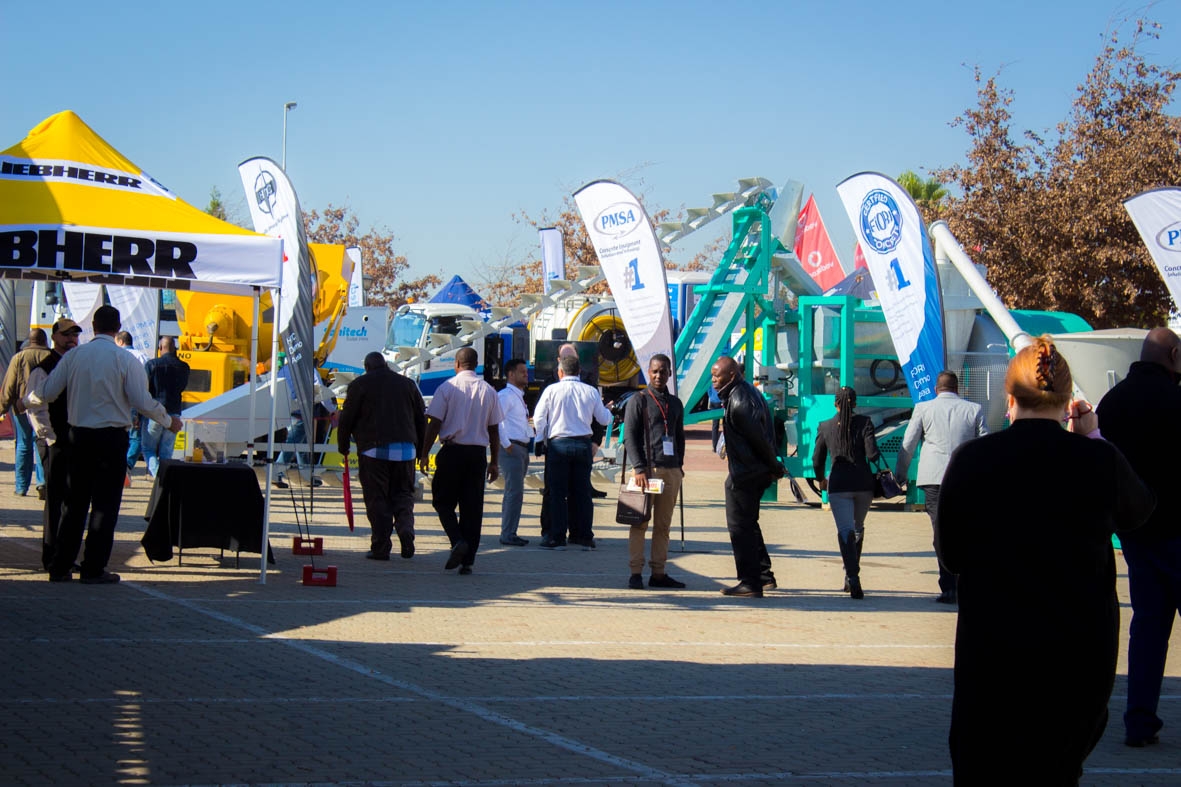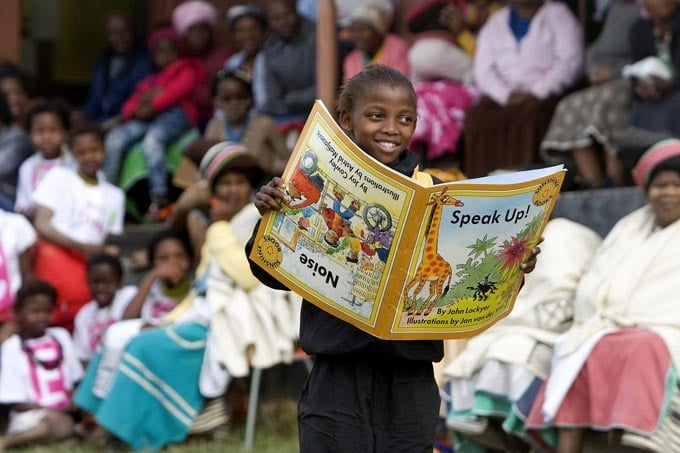

There can be little doubt for anyone observing South Africa’s economy over the past few years that the times have been torrid indeed.
It seemed that it would take a miracle for the country to emerge from the doldrums – but emerging from the doldrums it is.
The demise of Jacob Zuma and the installation of Cyril Ramaphosa have awakened a new sense of optimism. The Rand strengthened and levels of confidence are rising.
Rob Wessels, acting CEO of South African cement manufacturer AfriSam, highlighted that there were some green shoots in the industry, with construction and materials companies reporting cautious optimism. “This is not a quick fix”, he said. “But there is renewed optimism and when there’s optimism, suddenly people feel more confident.”
To support this optimism, a recent article by Tom Head published in South Africa the Good News, quotes Goldman Sachs declaring that: “South Africa will be the big emerging market story of 2018.” He continues: “Goldman Sachs are the world’s third-biggest investment bank. So they know a thing or two when it comes to picking out a country with massive ’emerging market’ potential. And right now, they’re championing South Africa.
Why is South Africa the big emerging market story? Cyril Ramaphosa has always been seen as the ‘business-friendly’ candidate for leadership. And in his first months as ANC President, he is getting things done. With interest rates reportedly lowering, it seems like Cyril Ramaphosa is going to make good on his promise of opening South Africa up to investors.
In addition, the Government’s Special Economic Zones (SEZs) are offering incentives to attract investment. SEZs, geographically designated areas of the country set aside for specifically targeted economic activities, are supported through special arrangements and systems that are often different from those that apply in the rest of the country. SEZs are growth engines towards government’s strategic objectives of industrialisation, regional development and employment creation.
Finally, South Africa has good infrastructure, excellent banking, independent courts, competitive politics, a robust media, and an increasingly active civil society. And an enforceable constitution.
So, what of the rest of Africa?
In 2014 an article “Africa: A bright outlook for the dark continent” stated that: “Perceptions of Africa as a backward, undeveloped land of harsh terrain and dim prospects have been slow to change. The truth is that Africa has made significant advancements in recent years, and each incremental improvement unlocks the potential for future improvement. In stark contrast to the notion of a dark continent, Africa today is home to millions of bright, motivated people whose primary goal is to seek better lives for themselves and their families.
Africa is a continent of explosive population growth – such that between now and 2050, over half of the world’s population growth will be in Africa and, by 2050, a quarter of the population will live on the continent.
Rapid urbanisation and population growth has led to an enormous housing backlog across the continent. It is unsurprising, therefore, that there are mega housing projects being implemented
across Africa. These are largely financed by Public-Private Partnerships (PPP), offering opportunities for investment.
In South Africa’s economic hub of Gauteng alone, the Mega Projects Initiative is taking off. This is a R100-billion economic corridor investment that aims to deliver more than 800 000 houses within 30 residential developments spread across the five development corridors in Gauteng. This too is a PPP project.
The 2017 edition of Deloitte’s Africa Construction Trends report includes 303 projects valued at US$50m or above that had broken ground by 1 June 2017. In total, these projects are worth US$307bn.
As a region, Southern Africa has the largest number of projects with 93 projects while West Africa remains as the region with the largest share of projects in terms of value, worth US$98.3bn. The projects included are spread between 38 of Africa’s 54 countries. South Africa is the single country with the most projects (44 projects) while Nigeria has the most projects by value (worth US$69.1bn).
Governments continue to be the largest owners of projects, owning between 57% and 90% of tracked projects per region, showing the importance of their role in providing critical infrastructure.
Governments also remain the single largest developers of infrastructure projects with Transport and Energy & Power dominating. Real Estate follows as a close second or third in each region.
Outdated attitudes and perceptions about Africa frequently overshadow the continent’s attractiveness for investment. However, the disconnect between perception and reality has created significant opportunities for investors willing to roll up their sleeves and put boots on the ground.
So, like old age, investing in Africa is not for sissies, but the rewards are there for the taking for the bold and those with the stomach for the long view.
Ready for Africa? Here’s where you should start.
And for those intrepid souls preparing to venture into Africa, there can be no more relevant event to attend than the sixth Annual African Construction and Totally Concrete Expo in Johannesburg on 16-17 May 2018.
The African Construction and Totally Concrete Expo caters for the entire African construction, cement and concrete industries. The audience includes architects, engineers, contractors, quantity surveyors, government representatives as well as suppliers of products and services to the industry.
The African Construction and Totally Concrete Expo will host a range of free-to-attend training workshops, educational sessions, high-level summits as well as awards for outstanding built environment professionals, giving you the opportunity to enhance your knowledge and network with industry peers.
If there’s one event you can’t afford to miss in 2018, the African Construction and Totally Concrete Expo is it. More information at www.totallyconcrete.co.za.
Current multi-billion projects in Africa include:
| Project Name | Country | Value (billion USD) |
| Mambila Hydroelectric Power Project | Nigeria | 5.8 |
| Standard Gauge Railway Project
|
Ethiopia | 3.4 |
| Standard Gauge Railway Project
|
Kenya | 3.2 |
| The LAPSSET Corridor Programme
|
Kenya | 13 |
| Lekki Deep Seaport
|
Nigeria | 1.2 |
| Nacala Corridor Rail and Port Project
|
Mozambique | 5 |
| Modderfontein New City
|
South Africa | 8 |
| Grand Ethiopian Renaissance Dam
|
Ethiopia | 5 |
| New Administrative Capital
|
Egypt | 45 |
| Banban Solar Park
|
Egypt | 4 |
| North-South Corridor
|
South Africa | 1 |
| Mombasa-Kigali Railway Project
|
Kenya | 3.8 |
| Bagamoyo Port
|
Tanzania | 10 |
| Inga 3 Dam Project
|
DRC | 80 |
| Konza Technology City
|
Kenya | 14.5 |
More news
- PART 3: HARNESSING THE POTENTIAL OF HIGH SULPHUR FLY ASH IN CONCRETE PRODUCTION
- PART 2: HARNESSING THE POTENTIAL OF HIGH SULPHUR FLY ASH IN CONCRETE PRODUCTION
- PART 1: HARNESSING THE POTENTIAL OF HIGH SULPHUR FLY ASH IN CONCRETE PRODUCTION
- PART 2: DESIGN AND CONSTRUCTION OF SLAB-ON-GROUND: APPLYING ACI 318
- DESIGN AND CONSTRUCTION OF SLAB-ON-GROUND: APPLYING ACI 318





